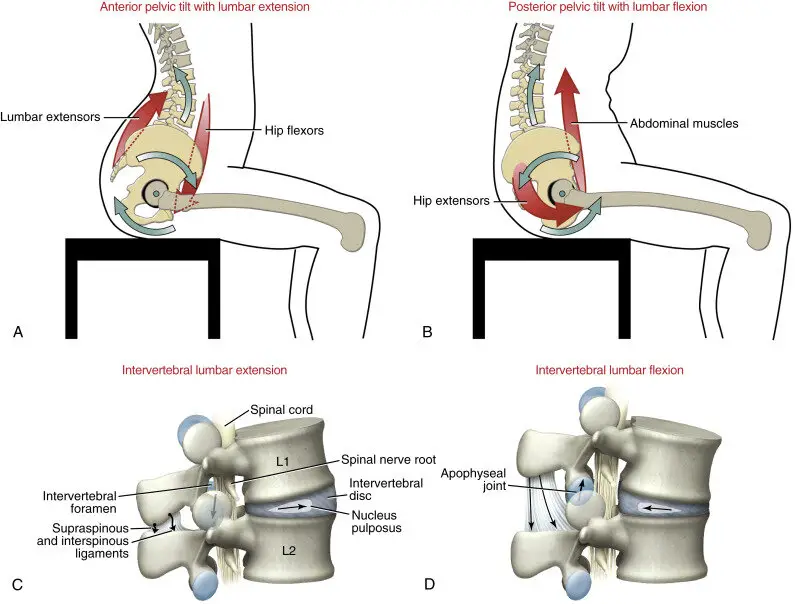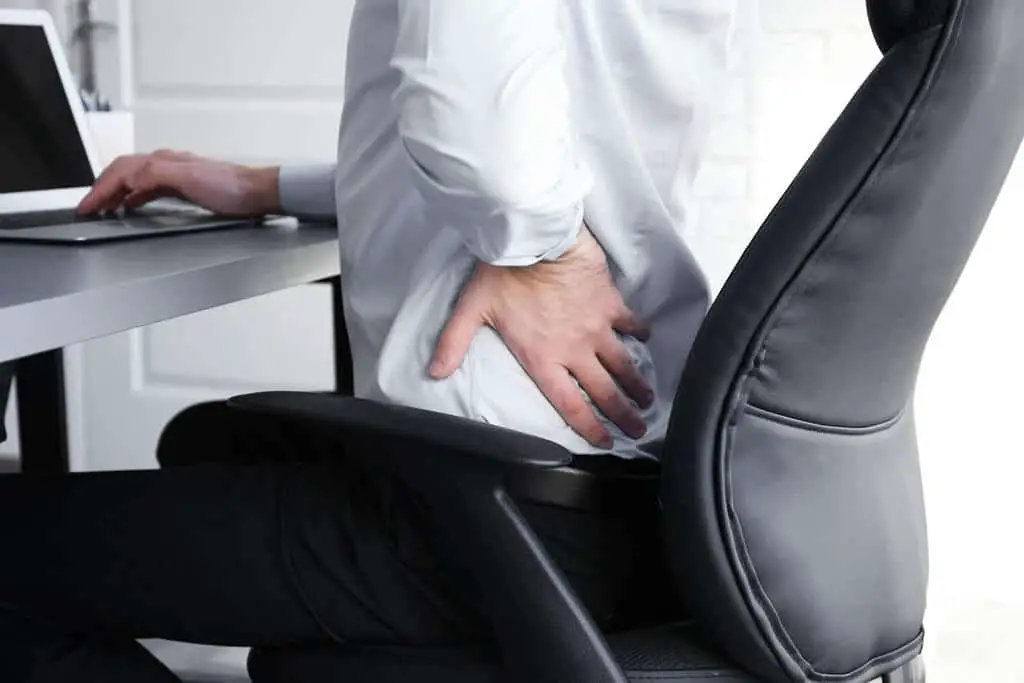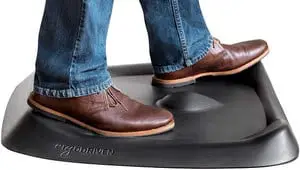Because of the demands of the modern world, many people are required to sit for a living. This, in turn, causes many problems related to posture in our daily lives. One of the most common issues is anterior pelvic tilt.
All content and media on Office Solution Pro are created and published online for informational purposes only. It is not intended as a substitute for professional medical advice and should not be relied on as health or personal advice. This post may contain affiliate links.
According to the Manual Therapy Journal, published in ScienceDirect, there are close to 75 percent of women, and a whopping 85 percent of men suffer from anterior pelvic tilt. What’s worse is that most people do not show any symptoms but turned out to suffer from this condition.
With all this in mind, we will look closely at how to fix anterior pelvic tilt while sitting. By being mindful of your sitting posture, especially when you need to work long hours, you are doing your part to combat the adverse effects of a sedentary lifestyle.
What is Anterior Pelvic Tilt
The anterior pelvic tilt is where your pelvis rotates forward, causing an arch in your lower back. This change in posture causes the front of the pelvis to tilt upward while the back of the pelvis rises. Without realizing it, this may be one of the reasons you experience lower back tightness.

Image sourced from sciencedirect.com
According to Medical News Today, two of the biggest causes of anterior pelvic tilt are excessive sitting and lack of physical activity. When we look at how we work, commute, and spend time watching TV, there is a lot of time spent sitting. This causes the shortening of the hip flexors, making them tight and weak.
When you experience pain or discomfort in your lower body, it’s best to consult with your doctor or physician to get the proper diagnosis and reduce the risk of the condition becoming worse. However, there are some telltale signs that you may suffer from an anterior pelvic tilt.
How do I know if I have anterior pelvic tilt?
The best way to determine whether you suffer from anterior pelvic tilt is to perform the Thomas test. It is a method of diagnosis named after the British Surgeon Hugh Owen Thomas and is a great way to self-diagnose an anterior pelvic tilt.
To perform this simple test, here’s what you need to do:
- Sit on the edge of a table.
- Lie down on the table with your legs hanging by the knee
- Pull one leg towards the chest, bending and holding the knee. Repeat with the other leg.
The backside of your resting leg should remain in contact with the table when you bring the other leg towards your chest. If your resting leg extends or rotates, this can mean that you suffer from an anterior pelvic tilt.
The good news is, learning the best way to sit with anterior pelvic tilt can help bring the pelvis to a more neutral and pain-free position. Accompanied by enough exercise and stretching, you may even counteract the adverse effects of sitting for long hours.
How to Sit with Anterior Pelvic Tilt
It’s common sense that because an anterior pelvic tilt is caused by inactivity, the optimal thing to reverse this problem is to spend less time sitting. However, this may not be an option for you due to the nature of your work at the office.
Most people who know that they have an anterior pelvic tilt are often making things worse by the way they sit. Because they are aware of their sitting posture, they avoid slouching while creating an exaggerated arch on their back (with their butts protruding outward).
Not only does this increase the inward curve of the spine, but it causes their pelvis to tilt forward even more. If you must sit, then you must learn to sit the right way. These are the procedure on how to sit with anterior pelvic tilt properly, all the while helping to reverse the symptoms:
1. Squeeze Your Glutes
The key to fixing anterior pelvic tilt while sitting is to sit straight on top of your ischial tuberosity, or more simply, your pointy butt bones. You aim to re-angle this triangular pair of sitting bones into a more neutral position.
The first thing that you need to do is to squeeze your buttocks. This is what’s going to help rotate the pelvis back and bring it downwards. If you’re skinny and sitting hurts your buttocks, consider buying an orthopedic chair cushion.
2. Engage Your Core
In addition to squeezing your glutes, you should also engage your core. Keeping a bit of tone within your abdominal muscles should help in neutralizing the pelvis and reduce any severe arches on your lower back.
Just from doing these two things alone, you should be well on your way to fixing anterior pelvic tilt and finding some relief in your lower back. A common pitfall, however, is not maintaining this position, especially over long periods of time. This brings us to…
3. Sit in a Comfortable Chair
A regular chair is designed to make your office space more beautiful, but they do little or nothing to support your back. What you can do instead is to invest in a proper ergonomic office chair. Find one designed to help you maintain proper posture, especially during long hours of sitting.
While it’s entirely natural for a human being to slouch, it’s essential to sit in an office chair that can help support your posture. Most options nowadays are equipped with recliners, allowing you to lie down and give your back a well-deserved break from sitting in front of a computer for too long.
4. Do Corrective Stretching and Exercises Daily
While sitting the right way can help fix your anterior pelvic tilt, you often need to do more than that to reverse it. This is where corrective exercises and stretching come into play. Some of the best ways to lengthen your hip flexors are simple to do anywhere, anytime.
One of the best exercises to fix an anterior pelvic tilt is the abdominal plank. Doing the plank strengthens your core without having to engage and shorten your hip flexors. An easy way to be consistent with this exercise is to do it first thing in the morning. A minute of planking a day can work wonders to help fix anterior pelvic tilt.
Related Questions to Anterior Pelvic Tilt
1. Can anterior pelvic tilt be corrected?
You can correct an anterior pelvic tilt by doing corrective exercises and stretching consistently. Getting physical therapy and massages may also help in fixing an anterior pelvic tilt. By being consistent with proper treatment, you are reducing the risk of lower back or hip pain.
If you feel an unimaginable amount of pain, it’s best to consult with your doctor or physician to get the proper diagnosis and the right treatment plan. Often, something that you think is simple may have further ramifications if left untreated.
2. What muscles are weak in anterior pelvic tilt?
The weak muscles that cause an anterior pelvic tilt are usually:
- Gluteus Muscles – these are located in the buttocks
- Hamstrings – these are located on the backside of the thigh
- Abdominal Muscles – these are your stomach muscles
A combination of these three weak muscles is what may cause your anterior pelvic tilt. If your job requires a lot of sitting, incorporate healthy movements by doing simple exercises daily. Replacing the elevator with a walk on the stairs can be a total game-changer to your overall well-being.
3. How long does it take to fix anterior pelvic tilt?
Generally, an anterior pelvic tilt can be fixed within a few weeks up to a few months, given proper physical treatment and corrective exercises. We wish that we could give you a definitive answer to this question. However, as with any other physical condition, the answer depends on a number of factors.
One of the most contributing factors is how severe your anterior pelvic tilt is. Surely, someone who has been suffering from this condition for five years will need more time to fully recover when compared to someone who has just developed the symptoms.
Another thing to consider would be how much effort you are putting into fixing an anterior pelvic tilt? Someone who does corrective exercises daily will have a faster recovery time than someone doing the same thing once per week.
PRO TIP: If you’re serious about finding proper comfort and fixing anterior pelvic tilt while sitting, consider reading our review of the best office chairs for lower body pain. We’ve carefully selected office chairs designed to support your body correctly while encouraging you to fix your posture.
Bottom Line
And there you have it, a complete guide on how to fix anterior pelvic tilt while sitting. Obviously, it’s best to reduce sitting time when looking to recover from this condition. However, there are simple ways to not only find comfort while sitting but reverse the negative effects as well.
Remember, by taking the time daily to strengthen your glutes and abs, you are doing your part to promote better posture and fight the effects of a sedentary lifestyle. At the end of the day, it’s all about seeking progress, not perfection. 🙂
Citations
- Herrington, L. (2011). Assessment of the degree of pelvic tilt within a normal asymptomatic population. Manual Therapy, 16(6), 646-648. https://doi.org/10.1016/j.math.2011.04.006
- https://www.physio-pedia.com/Thomas_Test
- Ischial tuberosity. (2022, April 21). In Wikipedia. https://en.wikipedia.org/wiki/Ischial_tuberosity







